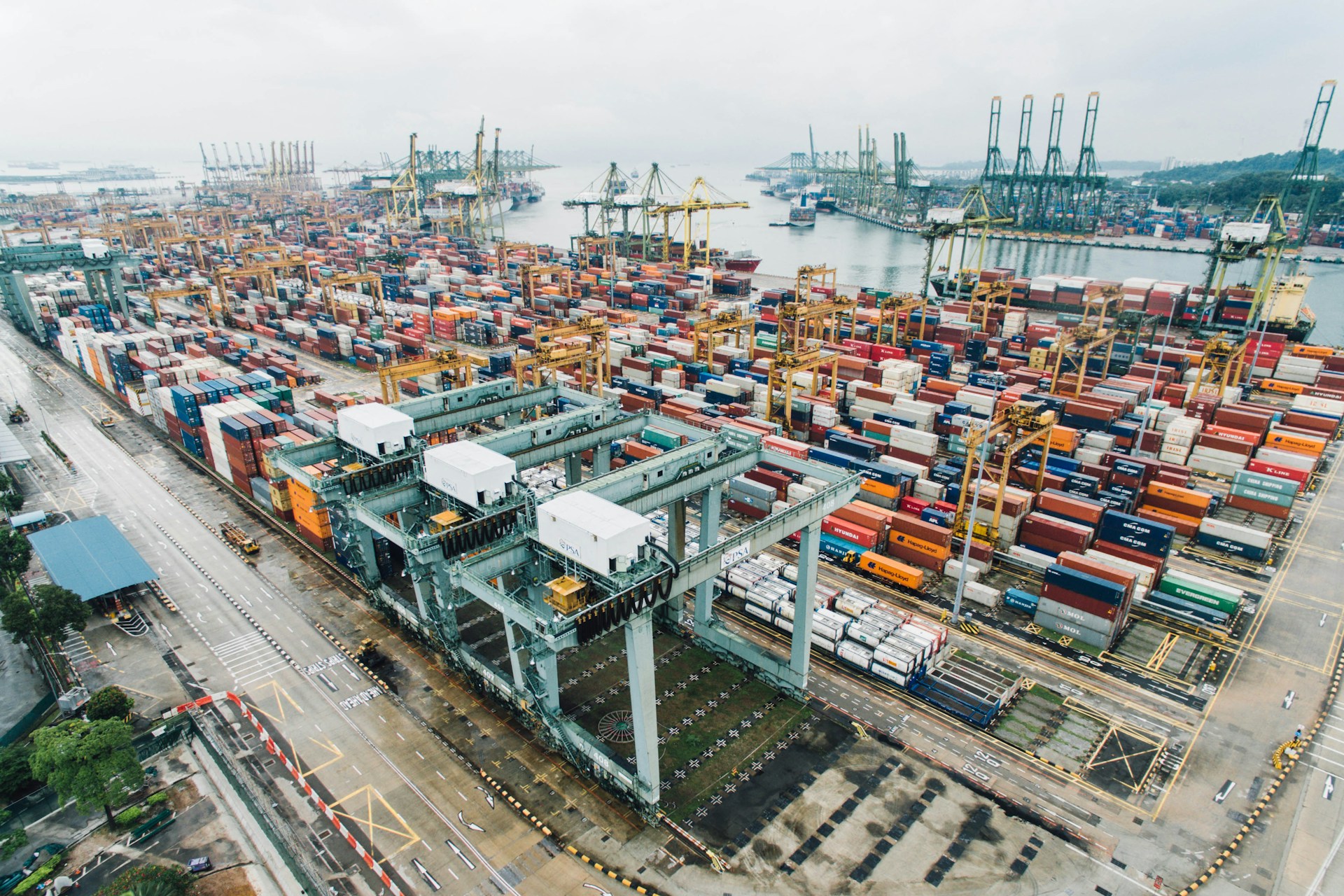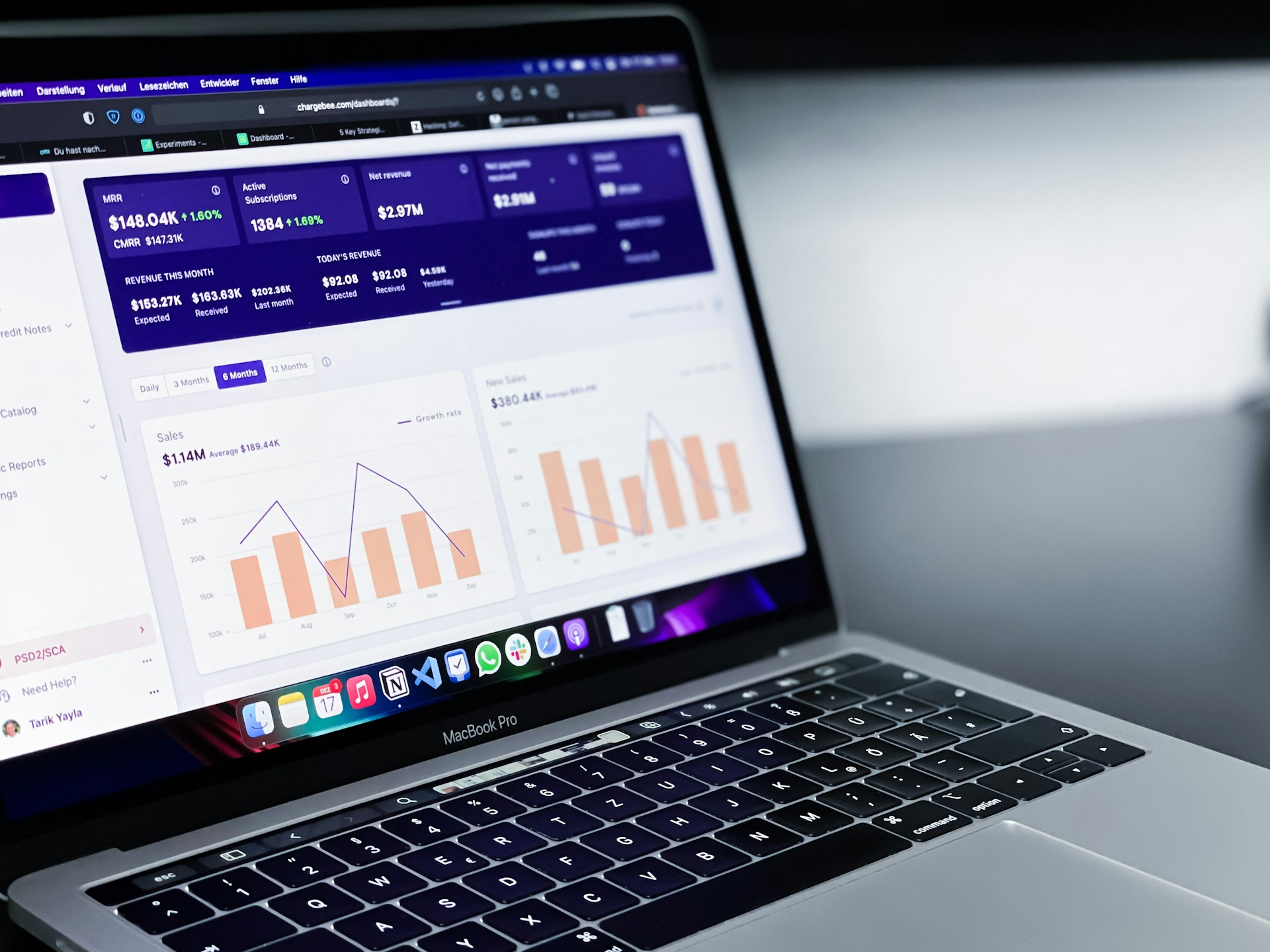In today’s competitive global marketplace, the successful transportation of perishable produce is a critical aspect of the supply chain.
However, it can also be fraught with various risks, challenges, and uncertainties.
To address these inherent difficulties, robust risk management methodologies need to be employed.
This ensures the produce arrives in optimal condition, reducing losses and maintaining business profitability.
Over the course of this blog, we will delve into these principles, shedding light on their implications and applications within the context of produce shipping.
From logistics and handling optimization, right through to financial and market-based risks, a wide range of factors will be considered.
Contents
- Principles Of Risk Management In Produce Shipping
- 1. Identify all potential risks in produce shipping
- 2. Analyze and Assess Each Identified Risk
- 3. Prioritize Risks Based on Severity
- 4. Develop risk management strategies
- 5. Implement planned risk control measures
- 6. Regularly Monitor and Review Risks
- 7. Encourage Open Communication About Risks
- 8. Learn from Past Risk Experiences
- 9. Incorporate Risk Planning in Management Decisions
- 10. Continually Update and Improve Risk Management Strategies
- The Bottom Line
Principles Of Risk Management In Produce Shipping
1. Identify all potential risks in produce shipping
The first crucial step in risk management within the framework of produce shipping is a comprehensive identification of all potential risks.
In the context of the industry, risks in produce shipping can manifest in various formats, and it’s essential to identify each.
One of these threats involves the risk of perishability.
Fruits, vegetables, and other agricultural products often have a limited shelf life and are susceptible to decay or contamination, especially during long transportation phases.
Therefore, an inefficient or incompetent handling and transportation process can likely result in the produce becoming unsellable or incurring huge financial losses.
Another risk factor pertains to the fluctuating fuel costs involved in shipping.
Unexpected increases in fuel prices can significantly impact the cost of shipping, consequently reducing profitability ratios and creating financial burdens for the organisation.
Additionally, the transport of agricultural products can be affected by potential changes in trade regulations and policies.
Any sudden alterations in import-export regulations, tariffs or bans can cause sudden disruptions in the shipping process, leading to compliance issues and financial repercussions.
Furthermore, extreme weather conditions are also a potential risk in produce shipping.
Unpredictable climatic changes can impact the safety and timeliness of transport, thereby causing potential losses.
There are also risks associated with machine failures.
Machinery and equipment used in the shipping and handling of produce can sometimes malfunction, causing major delays and monetary losses.
Lastly, there is the risk of supply and demand fluctuations.
Market demands for certain products can wildly swing, causing oversupply or scarcity, which can severely influence the profitability and stability of an organisation committed to produce shipping.
Overall, comprehensively identifying these risks makes it possible for an organisation to subsequently gauge these challenges and take necessary actions to mitigate any potential damages.
It is, thus, an imperative the first step towards establishing a sound framework for risk management in produce shipping.
2. Analyze and Assess Each Identified Risk
In analyzing and assessing the risks associated with produce shipping, we need to consider both the inherent and situational factors.
Primary among inherent risks is the perishable nature of produce.
Deterioration and spoilage can occur due to various environmental factors such as temperature fluctuations, inappropriate humidity levels, or inadequate ventilation.
The severity of this risk is considerably high as it could potentially lead to a complete loss of the shipped produce, impacting profitability.
Carriers should also be acutely aware of contamination risks.
Be it biological, physical, or chemical, contamination can render a product unfit for consumption, triggering significant financial and reputational damage.
Frequent sanitization of transport containers and maintaining strict hygiene protocols are potential measures to mitigate this risk.
As an environmental hazard, volatile weather poses a major risk to produce shipping.
Extreme heat, cold, or moisture levels during transit can compromise product quality and shelf-life.
Another potential risk in produce shipping involves logistical challenges.
Unforeseen circumstances such as equipment failures, road accidents, or unexpected traffic congestion can delay shipping, with potentially damaging consequences for perishable produce.
Potential supply chain disruptions owing to political instability, labor strikes, or natural disasters, could also pose significant risks to timely produce delivery.
Additionally, the risk of theft can never be completely ruled out in the shipping industry.
Premium produce can often attract unscrupulous elements leading to substantial business losses.
In conclusion, the adequate assessment and analysis of these risks places us in a better position to devise effective mitigation strategies, thus safeguarding the integrity of produce shipping operations.
3. Prioritize Risks Based on Severity
In the realm of produce shipping, it is crucial to prioritize risks based on their severity.
Not every risk carries the same weight or potential impact on operations.
Therefore, understanding and classifying these risks in order of severity enables the management to allocate resources and attention more effectively and efficiently.
Risks in produce shipping can range from minor logistical issues that cause slight delays to major incidents such as contamination or complete spoilage that can lead to significant financial losses and reputation damage.
Each of these risks needs to be assessed and ranked based on their potential impact.
The process of risk prioritization is a critical step in risk management as it informs decision-making and strategy development.
It also involves considering the likelihood of each risk materializing, alongside its potential severity.
Risks with high severity but low likelihood may still require substantial attention due to the disastrous impact they could have if they were to occur.
Conversely, frequently occurring minor risks may warrant a lower priority, but they should not be ignored as their cumulative impact can be substantial.
Additionally, handling risk is dynamic and requires an adaptive approach, which means risk prioritization is not a one-time activity.
It needs to be regularly reviewed and adjusted as circumstances change and new risks emerge.
Risk severity is often evaluated in terms of potential financial impact, but other factors such as reputational harm, legal consequences, and potential for business disruption should also be considered.
Ultimately, this comprehensive and systematic approach to prioritizing risks based on their severity can ensure that the most critical threats to the integrity of produce shipping are mitigated in the most effective manner.
In conclusion, a detailed understanding of the potential risks, their likelihood, and the potential impact is an essential prerequisite to prioritizing risks effectively in produce shipping.
In order to consistently ensure high-quality and timely delivery, a proactive and vigilant approach towards risk management is indispensable.
4. Develop risk management strategies
In the produce shipping industry, developing effective risk management strategies is paramount.
Risk management strategies serve as preventive measures to avoid potential losses resulting from unforeseen circumstances in the shipping line.
Developing these strategies necessitates a thorough understanding of the industry, its potential risks, and their impact.
Therefore, risk managers must keep abreast of industry changes that could impact the risk landscape.
Additionally, knowledge of supplier and customer requirements, market trends, and regulations is critical in risk management planning.
By constructing a robust risk management strategy, companies can not only mitigate risks but also enhance their decision-making processes.
In the development of these strategies, it’s crucial to incorporate the utilization of technology and data to improve risk identification and strategy implementation.
Tools like GPS tracking and real-time data analytics can greatly augment risk management by providing insights into potential risks and enabling quick responses.
Furthermore, the use of automated systems can detect and react to risk events faster than manual processes, reducing damage and loss.
Another vital aspect of risk management strategy development is the cultivation of a risk-aware culture within the organization.
This can be achieved through regular training, communication, and encouraging staff to actively participate in risk management activities.
Moreover, consider designing flexible strategies that can be adjusted in response to changes in the risk profile.
This involves continuous monitoring and revising strategies when necessary to ensure they remain effective in mitigating evolving risks.
Lastly, when developing risk management strategies, consider the costs versus the benefits of different risk control measures.
Choosing cost-efficient strategies that provide significant risk reduction and operational improvements, can foster a balanced approach to risk management.
Always remember, the goal of these strategies is to effectively manage and mitigate risks, thus protecting the organization from potential harms, and promoting a sustainable and successful produce shipping business.
5. Implement planned risk control measures
Once the potential risks in produce shipping have been identified, analyzed, and prioritized, the next crucial step in a robust risk management strategy is to implement planned risk control measures .
Risk control measures ideally represent a preemptive strike against any identified risks, providing preventions or solutions to any adverse events that could compromise shipping operations.
For instance, if an identified risk is the potential spoilage of the produce during transit due to improper temperature controls, a control measure could be investing in high-quality, dependable refrigeration equipment for the cargo holds or using real-time temperature monitoring systems.
Essentially, risk control measures are mechanisms in place to reduce threats or exploit opportunities encountered in the shipping process.
These measures, to be efficient, should be baked into the standard operating procedures of the shipping operations, so that they are automatically implemented at relevant points in the process.
The execution of the risk control measures should be carefully monitored, ensuring their effectiveness and efficacy, which helps to ensure that they are indeed mitigating the risks as intended.
If the measures laid out are not effective in mitigating risk, revisions and modifications may be necessary, making flexibility a key aspect of this process.
Additionally, staff training is crucial in the successful implementation of these measures, as your team members must understand and be able to execute them during the actual shipping process.
It is also important to do a cost benefit analysis when planning risk control measures in order to ensure that the benefits of reducing the risk outweigh the costs of the necessary precautions.
Another critical aspect to consider while implementing planned risk control measures is to incorporate a margin of safety so that you are prepared to handle unexpected or aggravated situations if they arise.
Lastly, it’s pivotal to always be mindful that while your measures are designed to mitigate risks, there may still be remaining residual risk- and it’s these unforeseen threats where a combination of good strategy and quick thinking will shine.
In essence, implementing planned risk control measures is a critical discipline that, when properly executed, can significantly improve the reliability and efficiency of your produce shipping operations.
No matter how daunting the task may seem, the ultimate goal is to reduce as many variables as possible, ensuring that the shipping process is no longer a gamble but a predictable and controlled operation.
6. Regularly Monitor and Review Risks
In produce shipping, it is essential to regularly monitor and review risks as part of an effective risk management strategy.
Periodic assessment of risks keeps an organization updated with potential threats that may affect the overall operations in the long run.
This process becomes more important given the volatile nature of the shipping industry, especially in troubling times as global pandemics and shifting trade policies.
Having a regular follow-up on potential threats helps to ensure timely interventions and proactive management of risks.
While some may view regular monitoring as a tedious process, it is fundamentally a proactive step that ensures the sustainability and stability of the supply chain operations in produce shipping.
The monitoring process also allows the creation of a repository of risks, acting as an effective tool for referencing and drawing strategies against similar future potential risks.
This can prove to be integral especially in the detection of patterns and trends in the shipping industry.
Moreover, technological advancements have also paved the way for advanced monitoring tools making the job less complicated and more efficient.
Having sound knowledge and understanding of these tools can significantly enhance the efficiency of the risk management process.
The use of logistical software and solutions also facilitate the tracking and reporting of risks in real-time.
They not only provide a comprehensive view of operations but also highlight any operational inefficiencies and risks that may be hidden.
However, while monitoring is crucial, the importance of a comprehensive review process cannot be overlooked.
Through a systematic review process, it is possible to extract meaningful information from the observed data, helping to implement evidence-based changes in the system.
It serves as the feedback mechanism that evaluates the effectiveness of the risk management strategies in place.
Identifying the gaps in the risk management process and evaluating the costs of mitigation strategies is an important part of this review process.
Every step, every milestone and every change must be put under the lens to ensure the ongoing viability of the implemented risk control measures.
Remember, monitoring and reviewing risks should not act as a tool for punitive measures but rather a learning opportunity for improvements.
7. Encourage Open Communication About Risks
In the field of produce shipping, open communication about potential and actual risks is critical.
It is through this transparent dialogue that a collective understanding about the nature and extent of risks is developed, which is the foundation of effective risk management.
In a business environment, open communication helps in sharing knowledge and experiences, fostering a culture of collective responsibility towards risk management.
Moreover, an organization should aim to establish formal communication channels through which information about risks can flow freely.
Such formal channels may include, but are not limited to, risk management meetings, email alerts, discussion forums, and suggestion boxes.
These mechanisms encourage all employees, regardless of their position, to share their insights and experiences with risk scenarios, this is crucial for learning and decision-making purposes.
Wider the knowledge of the team, better are the decisions and evaluations related to risk management.
However, it’s not enough to just have these channels in place; the organization’s leadership must actively demonstrate that they value this communication.
An attitude of openness from the top down inspires trust among employees and makes them more willing to share their thoughts and ideas, further boosting the organization’s risk management efforts.
Another important element to encourage open communication is the reduction of barriers to communication.
These may be hierarchical barriers, where lower-level employees feel intimidated to share their thoughts with higher-ups, or they may be cultural barriers, where certain thoughts or opinions are discouraged.
Seminars, workshops or trainings can be helpful in creating a non-threatening environment, where everyone feels comfortable to speak up.
Anonymity should be provided where necessary, to ensure that employees feel safe expressing their thoughts.
Effective communication involves not only speaking, but also listening, understanding, and acting on the information provided.
Therefore, making it a priority to actively listen and provide feedback is central to open communication.
By implementing these strategies, a company can promote an environment of shared learning and continuous improvement in risk management.
Every member of the organization, from leadership to frontline employees, plays a role in identifying, assessing, and managing risk, thus, everyone should feel free to express their views, questions, and concerns about risks.
8. Learn from Past Risk Experiences
One of the integral principles of risk management in produce shipping involves learning from past risk experiences.
Companies should make a constant effort to record, analyze and learn from their past risk incidents in shipping processes.
Risk lessons from the past can come in a variety of forms, most commonly these are failed inspections, spoilt produce, or even full-scale product recalls.
Remembering and learning from these past events can be a potent tool in preventing their recurrence and strengthening risk management plans.
It is not only crucial to learn from your own company’s past experiences but also from those of others within the industry.
Studying the failures and successes of others is a cost-effective and smart approach to learning what to do and what not to do.
Shared experiences promote a proactive rather than reactive strategy towards identifying and managing risks.
Organizations should develop a risk memory by keeping a structured record of past risk management experiences.
This record helps assess if risk management strategies are effective, or if new solutions need to be developed and implemented.
Moreover, revisiting past risk experiences and outcomes should be an integral part of regular organizational audits.
Organizational learning from past experience is an ongoing process of knowledge acquisition, adaptation, and improvement.
It allows the company not only to mitigate risks but also to spot opportunities for improvement and innovation within the shipping processes.
To foster this learning culture, companies should promote an environment where employees feel comfortable sharing their insights and experiences.
After all, risks in the produce shipping industry can’t be completely eradicated; however, they can be significantly reduced by learning from past experiences.
Ultimately, learning from past risk experiences provides essential feedback to improve risk management strategies and refine decision-making processes in produce shipping.
The challenge is not to avoid risks altogether, but to understand how to manage them in the most efficient and effective way, and with the least harm possible.
9. Incorporate Risk Planning in Management Decisions
When discussing the principles of risk management in produce shipping, it becomes paramount to incorporate risk planning in management decisions.
This isn’t just a desirable excellent practice, but also a central component of any efficient risk management strategy.
Effectively, it’s the management’s responsibility to make informed decisions and take necessary steps to mitigate the identified threats.
However, this is not a one-off task, but a dynamic process that requires regular consideration and reassessment of potential threats.
While strategic plans and business models are being developed, structuring risk prevention measures should be at the helm of this process.
Through incorporating risk planning within the decision-making process, managers can develop a proactive approach towards risk management.
This in turn not only safeguards the company’s assets but also its reputation, potentially preventing the exponential costs associated with risk realization.
Moreover, this approach helps prepare for potential disruptions, enabling the supply chain to maintain a steady flow of produce shipment even in inconvenient or unforeseen circumstances.
Management must understand the value of incorporating risk management into planning, acknowledging its impact on the overall business strategy.
For instance, it reduces the likelihood of risk occurrence, it helps ensure better communication amongst team members, and it fosters an organizational culture of risk awareness.
In essence, the ultimate aim of successfully integrating risk planning with management decisions is to help in making better-informed decisions, which can lead to significant benefits, regardless of the size or nature of the risks involved in the produce shipping industry.
A continuous review and reassessment of the risks involved and the ongoing strategy is inevitable for a resilient risk management.
Risks are dynamic, so is the business environment and only a reactive approach to incorporating risk management will not be enough.
A more proactive approach, one that incorporates it into the overall planning and decision making is the key to successful risk management.
Essentially, successful risk management requires leadership commitment, the right set of tools, expertise for implementation, training and the right mindset to understand and manage risks.
By adopting a risk-aware culture, produce shipping companies can ensure that their management decisions are informed, balanced, and strategic.
10. Continually Update and Improve Risk Management Strategies
In the field of produce shipping, principles of risk management dictate that strategies should repeatedly be updated and improved.
This ensures that the methodologies not only remain relevant and effective, but also adaptable to the ever-evolving landscape of the industry.
The involved processes, technologies, and goods keep changing, consequently affecting the nature and implications of potential risks.
This incessant transformation necessitates continuous reassessment and fine-tuning of the risk management strategies employed.
The ability to anticipate and plan for future risks can dramatically improve an organization’s resilience and capacity to handle unforeseen circumstances.
Practical experience, industry updates, and scientific research provide valuable insights, that can be leveraged to enhance risk management tactics.
Key learnings and lessons from past experiences should be routinely incorporated into risk planning to avoid recurrence of similar challenges.
On a similar note, advancements in technology present new tools and approaches for risk mitigation. Embracing these can immensely reinforce the effectiveness of risk strategies.
Also, since risks faced by different organizations in the shipping industry tend to differ, customizing risk management strategies to one’s specific business situation can yield much more desirable results.
In such cases, investment in advanced analytics tools, capable of taking vast amounts of variable data points into consideration, can be very beneficial.
Furthermore, plans set in place should be flexible enough to accommodate adjustments when necessary.
Performing regular reviews and adjustments ensures both the relevancy of the strategy and its alignment with the business’s changing goals and environment.
Another essential task is the continuous training of staff to keep them abreast with shifts in the industry and equip them with new risk management skills.
Lastly, it is equally important to efficiently communicate any changes or improvements to all personnel involved in the shipping operations.
To sum up, a dynamic risk management strategy that is perpetually evolving, adapting, and enhancing could become a crucial success factor in contemporary produce shipping businesses.
The Bottom Line
Efficient and proactive risk management in produce shipping is fundamental to avoiding substantial financial losses and detrimental impacts on reputation.
Identifying potential risks, investing in appropriate analysis measures, and prioritizing them based on severity is an initial but crucial step.
This feeds into the development and implementation of well-thought-out risk control measures.
It is pivotal, however, to maintain regular monitoring and review systems to remain on top of the risk landscape.
Encouraging open communication about risks fosters a company culture of transparency, whilst learning from previous risk experiences offers a wellspring of interim guidance.
The ultimate goal, which incorporates all these measures, is to ensure risk planning holds an indispensable position within management decisions, continually updating and elevating the standard of risk management strategies.




